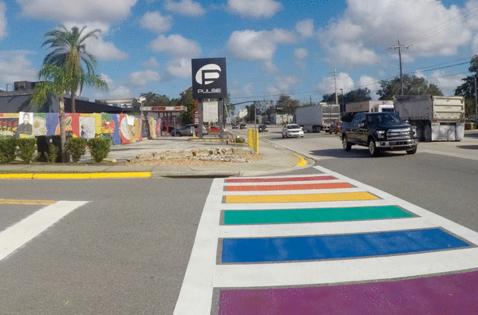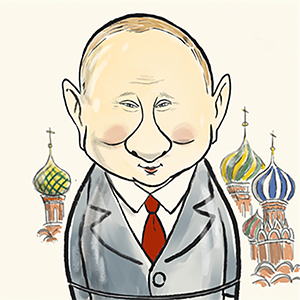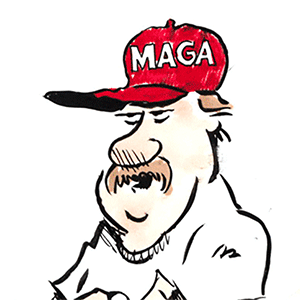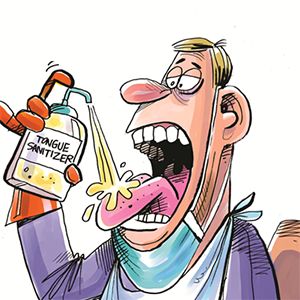Trump administration takes aim at rainbow crosswalks like at Pulse nightclub site
Published in Political News
ORLANDO, Fla. — The Trump administration is seeking to wipe rainbows and other “political banners” from streets and crosswalks across the nation, a move that puts at risk the multi-colored crossing near the former Pulse nightclub in Orlando.
Transportation Secretary Sean Duffy sent a letter to the nation’s governors this week introducing a “safety initiative” seeking consistent markings on roads. On a post on X the same day, he more clearly spelled out his intentions.
“Taxpayers expect their dollars to fund safe streets, not rainbow crosswalks,” he posted. “Political banners have no place on public roads. I’m reminding recipients of @USDOT roadway funding that it’s limited to features advancing safety, and nothing else. It’s that simple.”
A rainbow crosswalk has been emblazoned on Orange Avenue at West Esther Street since 2017. It’s at the southern boundary of Pulse, the nightclub once seen as a safe haven for the LGBTQ community and where 49 were killed and 53 were wounded in a mass shooting on June 12, 2016.
Duffy’s letter itself doesn’t mention rainbows or “political banners” specifically, but states the agency’s desire to partner with state and local governments to “make the entire roadway right-of-way easier to interpret and navigate for all users.” It cites 39,345 traffic fatalities last year as “unacceptable,” though that marks a 3.8% decrease from the year prior.
City Commissioner Patty Sheehan, Central Florida’s first openly gay elected official, said she wasn’t surprised that the crosswalks and others like it were in danger. But she noted the rainbow crosswalk is part of the design for the memorial to the nightclub shooting, which received state funding in the budget signed by Gov. Ron DeSantis this week.
“I think they’re trying to undo anything that celebrates marginalized people, and that’s just terrible,” Sheehan said. “That rainbow crosswalk is also part of the Pulse memorial and the state just gave us $400,000 toward the memorial, so I would hope they wouldn’t do something that would be detrimental to that memorial.”
On Wednesday, city officials received a separate memo — though dated a day prior to Duffy’s — from the Florida Department of Transportation, noting that surface markings must “serve a functional, safety-related purpose,” and that the department’s design manual “explicitly prohibits the application of pavement or surface art on travel lanes, paved shoulders, intersections, crosswalks or sidewalks.”
The manual specifically notes that pavement art associated with social, political or ideological messages is banned, and that the state can withhold funding from any agency not in compliance, according to the state’s letter.
But such markings can stay on the road with permission from the state “if the public agency is able to demonstrate good cause for doing so,” the memo reads.
In recent years, Orlando transportation officials have painted at least five major downtown crosswalks with artistic murals, which they say was part of their plan to increase visibility of crosswalks and hopefully improve safety for people crossing.
At the time, they cited research from Bloomberg Philanthropies, which found a 50% dip in crash rates involving pedestrians and a 37% drop in crashes involving pedestrians at intersections that have asphalt art. Drivers also yielded to pedestrians 27% more often at such intersections, the group’s research showed.
While those murals depict the Lake Eola fountain, orange slices, Lake Eola’s famous swans and other apolitical art, they seem to run afoul with the state’s directive.
City officials hadn’t received the federal letter and are reviewing the state’s directives, a spokesperson said.
The murals were announced in 2023, which also marked the paving over of a 400-foot Black Lives Matter mural along Rosalind Avenue, painted in the colors of the Pan-African flag.
It was first painted in June 2020 by city officials and community members after the death of George Floyd in Minneapolis, which spawned nationwide protests against systemic racism and police brutality, including in Orlando. The mural was ultimately covered up as part of repaving the street three years later.
The new FDOT memo on street surfaces comes after it adopted a policy in February to limit lighting on state-managed bridges to “a default scheme of red, white and blue,” preventing previous designs such as the rainbow colors on Lake Underhill Bridge on State Road 408 in Orlando in the weeks after Pulse in 2016 and on other state bridges in the years afterward.
_____
©2025 Orlando Sentinel. Visit orlandosentinel.com. Distributed by Tribune Content Agency, LLC.

























































Comments